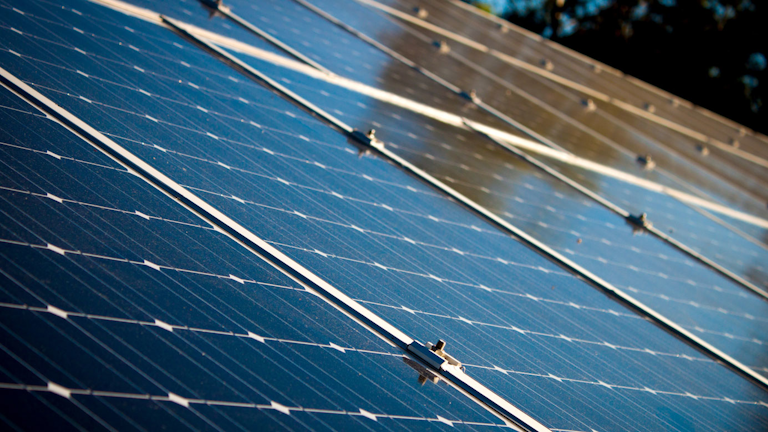Sind Sie Franchise-fähig? Eine umfassende Analyse für Ihr Unternehmen
Die Entscheidung, ob ein Unternehmen franchise-fähig ist, ist für viele Unternehmer sowohl eine aufregende als auch herausfordernde Aufgabe. Franchise-Modelle bieten eine attraktive Möglichkeit zur Expansion, da sie es ermöglichen, eine Marke schnell und effizient auf verschiedenen Märkten zu etablieren. Doch nicht jedes Unternehmen eignet sich für ein Franchise-System. In diesem Artikel werden wir eine umfassende Analyse durchführen, um festzustellen, ob Ihr Unternehmen das Potenzial hat, als Franchise zu wachsen.
1. Was ist ein Franchise?
Bevor wir uns mit der Frage beschäftigen, ob Ihr Unternehmen franchise-fähig ist, wollen wir kurzes Verständnis dafür schaffen, was ein Franchise ist. Ein Franchisesystem ist eine Geschäftsstrategie, bei der ein Unternehmen (der Franchisegeber) einem anderen Unternehmen (dem Franchisenehmer) das Recht einräumt, seine Marke, Geschäftsmodelle, Produkte und Dienstleistungen unter bestimmten Bedingungen zu nutzen. Im Gegenzug zahlt der Franchisenehmer in der Regel eine einmalige Gebühr sowie laufende Lizenzgebühren.
2. Merkmale eines starken Franchise-Systems
Um festzustellen, ob Ihr Unternehmen für das Franchising geeignet ist, sollten wir die Faktoren betrachten, die ein erfolgreiches Franchise-System auszeichnen:- Nachhaltige Marke: Eine bekannte und respektierte Marke zieht potenzielle Franchisenehmer an. Die Bekanntheit und das positive Image Ihres Unternehmens sind entscheidend.
- Reproduzierbares Geschäftsmodell: Ein erfolgreiches Franchise benötigt ein Geschäftsmodell, das einfach zu reproduzieren ist. Es sollte klare Prozesse und Standards geben, die es jedem Franchisenehmer ermöglichen, das Geschäft gleichwertig zu führen.
- Marktforschung: Es ist wichtig zu untersuchen, ob es einen Markt für Ihr Produkt oder Ihre Dienstleistung gibt. Stellt sich heraus, dass die Nachfrage hoch ist, haben Sie einen guten Ausgangspunkt.
- Unterstützung und Schulung: Ein starkes Franchise-System sollte Schulungsprogramme und Unterstützung für die Franchisenehmer bereitstellen, um ihre Möglichkeiten zum Erfolg zu stärken.
3. Fragen, die Sie sich stellen sollten
Bevor Sie den Schritt zum Franchise-Modell in Betracht ziehen, sollten Sie sich einige wichtige Fragen stellen:- Ist mein Geschäftsmodell skalierbar? Überlegen Sie, ob Ihr Geschäftskonzept auch an verschiedenen Standorten und durch verschiedene Franchisenehmer erfolgreich umgesetzt werden kann.- Habe ich ein Alleinstellungsmerkmal? Gibt es etwas, das Ihr Unternehmen von anderen Anbietern unterscheidet? Ein starkes Alleinstellungsmerkmal kann die Marktnachfrage stimulieren.- Sind meine Produkte/Dienstleistungen tragfähig? Prüfen Sie, ob Ihr Angebot auch langfristig wirtschaftlich bleibt.- Habe ich die Ressourcen für die Unterstützung von Franchisenehmern? Als Franchisegeber müssen Sie bereit sein, Unterstützung zu bieten. Verfügen Sie über die nötigen Ressourcen und Fähigkeiten, um Schulung und Unterstützung zu gewährleisten?
4. Marktanalyse
Eine gründliche Marktanalyse ist entscheidend, um das Potenzial Ihres Unternehmens für das Franchising zu bewerten. Dazu gehört:- Zielgruppenidentifikation: Bestimmen Sie Ihre Hauptzielgruppe. Wer sind Ihre Kunden und wo befinden sie sich?- Wettbewerbsanalyse: Analysieren Sie die Wettbewerbslandschaft in Ihrem Bereich. Gibt es bereits Franchise-Unternehmen, die ähnliche Produkte oder Dienstleistungen anbieten? Welchen Wettbewerbsvorteil haben Sie?- Standortwahl: Überlegen Sie, welche geografischen Märkte für Ihr Franchise-Modell am sinnvollsten sind. Welche Märkte zeigen derzeit Wachstumschancen?
5. Finanzielle Überlegungen
Die finanziellen Aspekte eines Franchise-Systems sollten nicht ignoriert werden. Dazu gehören:- Startkosten für Franchisenehmer: Ermitteln Sie die Kosten, die Franchisenehmer benötigen, um ihr Geschäft zu starten. Eine klare Aufschlüsselung der Kosten ist wichtig, um potenzielle Franchisenehmer anzuziehen.- Laufende Gebühren: Bestimmen Sie, welche laufenden Gebühren Sie von Ihren Franchisenehmern verlangen werden, wie z. B. Lizenzgebühren und Marketingbeiträge.- Finanzierungsoptionen: Überlegen Sie, welche Unterstützung Sie Franchisenehmern bei der Finanzierung ihres Unternehmens anbieten können.
6. Erforderliche rechtliche Schritte
Der Aufbau eines Franchise-Systems erfordert umfangreiche rechtliche Überlegungen. Dazu gehört die Erstellung von:- Franchise-Vertrag: Ein rechtlich bindender Vertrag, der die Bedingungen der Franchise-Vereinbarung festlegt.- Offenlegungsdokument: Dieses Dokument informiert potenzielle Franchisenehmer über alle wichtigen Informationen und finanziellen Aspekte.- Markenschutz: Überprüfen Sie, ob Ihr Unternehmensname und Ihre Marke rechtskonform und geschützt sind.
7. Entwicklung eines Schulungsprogramms
Ein robustes Schulungsprogramm ist für den Erfolg eines Franchise-Systems von entscheidender Bedeutung. Dies sollte beinhalten:- Einstiegsschulung: Eine gründliche Schulung für neue Franchisenehmer, die alle Aspekte des Betriebs abdeckt.- Fortlaufende Schulung: Regelmäßige Schulungsangebote, um Franchisenehmer über neue Produkte, Dienstleistungen oder Entwicklungen auf dem Laufenden zu halten.- Support-System: Etablierung eines Systems zur kontinuierlichen Unterstützung, sodass Franchisenehmer bei Herausforderungen Hilfe erhalten können.
8. Erfolgsfaktoren
Um sicherzustellen, dass Ihr Franchise-System erfolgreich ist, sollten Sie folgende Erfolgsfaktoren berücksichtigen:
- Kundenfeedback nutzen: Hören Sie auf die Rückmeldungen der Franchisenehmer und Kunden, um Ihre Geschäftsmodelle kontinuierlich zu verbessern
.- Aktive Marketingstrategie: Entwickeln Sie einen Marketingplan, der sowohl auf Franchisenehmer als auch auf Endkunden abzielt.
- Netzwerkbildung: Fördern Sie den Austausch unter Ihren Franchisenehmern, um den Wissensaustausch und die Zusammenarbeit zu stärken. FazitDie Frage, ob Ihr Unternehmen franchise-fähig ist, hängt von vielen Faktoren ab. Es ist entscheidend, ein gesundes Geschäftsmodell, ein starkes Alleinstellungsmerkmal und die notwendigen Ressourcen und rechtlichen Rahmenbedingungen zu haben. Eine umfassende Analyse in Bezug auf Marktchancen, Finanzen und Schulungsprogramme ist ebenso wichtig.Wenn Sie die erforderlichen Schritte und Überlegungen in die Tat umsetzen, kann Ihr Unternehmen auf dem Weg zum Franchise-Erfolg aufblühen. Nutzen Sie diese Gelegenheit, Ihre Marke zu erweitern und neue Geschäftspartner zu gewinnen. Denn die Franchise-Welt bietet viele Möglichkeiten, die darauf warten, von Ihnen erschlossen zu werden.

